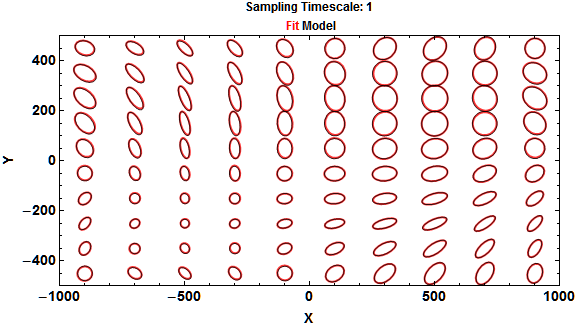Diffusive Dynamics
A set of packages to calculate position-dependent diffusion coefficients in one and two dimensions from collective variables trajectories written in Mathematica®.
Installation
Automatic installation
Download the zip file of the repository. Extract the file to any location, open Install.m with Mathematica and click on the Run Package botton in the upper right corner of the notebook. This will install and load the DiffusiveDynamics package automatically.
Manual installation
The package can also be installed manually. Copy the DiffusiveDynamics subdirectory to the $UserBaseDirectory/Applications directory. The full path to the directory can be obtained (and copied to the clipboard) by running this Mathematica commands:
userdir = FileNameJoin[{$UserBaseDirectory, "Applications"}]
CopyToClipboard[userdir]
Installing a C compiler (optional)
If perfomance is paramount a C compiler can be installed to speed up crucial parts of the package. More information about installing a compiler for Mathematica can be found here (and here and here).
2D Quick Start
Tuturials are available in the Tutorials folder. For the courious here is a quick start (this is a shortened version of Tutorials/01-QuickStart2D.nb):
Load needed packages
(*Load the package*)
Needs["DiffusiveDynamics`"]
(*Load the package for parallel kernels as well*)
ParallelNeeds["DiffusiveDynamics`"]
Define diffusion parameters
(*The number of steps*)
STEPS = 1000000;
(*The time step*)
STEP = 1;
(*The unit cell vectors (origin is at 0,0 and the size is from -1000
to 1000 in the x and -500 to 500 in the y dimension*)
CELLRANGE = {1000., 500.};
(* For maximum speed the diffusion expression should be compiled *)
(* The diffusion is given as the major and minor axis of the diffusion
tensor and the angle of rotation around the origin from the original
x axis *)
DIFFX = Compile[{x, y},
5 Sin[x/ CELLRANGE[[1]] \[Pi]] + 10];
DIFFY = Compile[{x, y},
5 Sin[y/ CELLRANGE[[2]] \[Pi]] + 10];
ALPHA = Compile[{x, y},
(((x/2)/CELLRANGE[[1]])^2 + ((y/2)/ CELLRANGE[[2]])^2)*180];
(*Energy is in units of kT*)
KT = 1;
(*Here as a simplest case energy is constant*)
ENERGY = Compile[{x, y}, 0];
Generate the trajectory
(*Uses all available cores and by default generates
2*number of cores of segements. The total length off all segments is equal to STEPS. *)
rw = ParallelGenerateDiffusionTrajectory2D[STEPS, DIFFX, DIFFY, ALPHA,
ENERGY, KT, STEP, {-CELLRANGE, CELLRANGE}];
Analyze the trajectory
w = CELLRANGE/5;
binSpec = Transpose[{-CELLRANGE, CELLRANGE, w}];
(* we also have to decide what strides we would like. Strides
basically adjust the sampling timescale to Stride*Timestep *)
STRIDES = {1, 10, 100};
diffs = GetDiffusionInBins[rw, STEP, binSpec, "PadSteps" -> True,
"Strides" -> STRIDES, "Parallel" -> True];
Get the model diffusion as well
modelDiffs =
GetDiffusionInfoFromParameters[binSpec, STEP, STRIDES, DIFFX, DIFFY, ALPHA, "Parallel" -> True];
Visualize the result
(*We see almost perfect aligment at stride 1*)
s=1;
DrawDiffusionTensorRepresentations[{diffs[[All, s]], modelDiffs[[All, s]]}, 1(*this 1 is the selected bin*)
, Scale -> 3.5, ImageSize -> Large
, PlotLabel ->
Row@{"Sampling Timescale: ", s*STEP, "\n", Style[" Fit ", Red], "Model"}
, PlotStyle -> {Directive[Thick, Red, Opacity@.8], Directive[Thin, Black, Opacity@.8]}
, LabelStyle -> {14, Bold, FontFamily -> "Arial"}
, FrameLabel -> {"X", "Y"}, Axes -> False
]
##Compatibility This code works under Mathematica 9. Due some strange memory leaks Mathematica 8 is currently not supported. A trial version of Mathematica can be obtained here.
Terms of use
The code is licensed under GPLv3. Copyright (C) 2013 Ajasja Ljubetič. In published work which uses this package please cite Ljubetič et al, J. Chem. Phys. 140, 084109 (2014).
